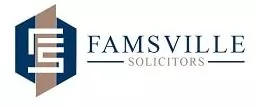INTRODUCTION
Trademark is a distinctive sign or indicator used by an individual, business organization or other legal entity to identify a particular product or service as originating from a unique source, and to distinguish the product or service from those of other entities.
Trademark Licensing basically entails permission granted by a registered trademark owner, known as the Licensor to another, known as the Licensee to utilize his trademark in instances where such utilization would otherwise result in infringement if done without such permission. A Licensing Agreement is usually entered into in writing to serve as evidence of the grant of the license, and to detail the scope of the license as well as the rights and obligations of both parties. It is thus imperative that the Licensee carries out the acts specifically outlined under the Licensing Agreement ("the Agreement") between parties in order to avoid an action for infringement. Where a trademark license is granted, the ownership of the trademark remains vested in the Licensor/Proprietor while the Licensee has the authority to exercise some or all of the proprietor's rights to the extent as is allowed in the agreement between the parties. This can be likened to a lease agreement where a landlord gives up possession and not ownership of his property, for a tenant to enjoy for certain period of time, subject to the payment of rent; and upon the expiration of the period, the property is taken back by the landlord. Licensing is usually preferable to outright sale or assignment because it gives the proprietor much control over the use of the trademark, and most importantly, the ownership remains with the licensor.
Section 33 of the TradeMarks Act ("the Act)1 provides for Trademark licensing. It states that "Subject to the provision of this and the next following section, a person other than the proprietor of a trademark may be registered as a registered user thereof in respect of all or any of the goods in respect of which it is registered (otherwise than as a defensive trade mark) and either with or without conditions or restrictions".2 It is pertinent to note that the term Licensee is referred to as "registered user" in the Act.
This Article shall provide insight into what Trademark Licensing entails.
TYPES OF TRADEMARK LICENSING
A Proprietor of a Trademark can explore his licensing options in various ways:
- Sole Licensing: This occurs where the proprietor permits a sole licensee to exploit the trademark for a specified period of time. Thus, the proprietor as well as the licensee can utilize the trademark and the same cannot be given to another licensee.
- Exclusive Licensing: This occurs where the proprietor grants a licensee an exclusive commercial right to use his trademark. Here, the licensor does not have a commercial right to the trademark.
- Non-Exclusive Licensing: This occurs where the proprietor permits one or more licensees to exploit the trademark.
It is important to quickly differentiate between a Trademark licensing and a franchise, because of the perceived similarities between the two concepts. In a trademark licensing, the licensee only acquires the right to use products and goods but the ownership remains with the licensor; however, in a franchise arrangement, the franchisee enjoys the ownership of the business on behalf of the franchisor in lieu of a fee where the processes are closely controlled by the franchisor.
ADVANTAGES OF TRADEMARK LICENSING
The following are some of the benefits or advantages of trademark licensing:
- Enhances Residual Revenue: The proprietor tends to earn profits and acquire passive stream of income from licensing the trademark to various licensees. This therefore enhances the revenue of the proprietor while retaining his intellectual property rights as the owner of the trademark.
- Swift entry into foreign markets: Licensing a trademark helps the product enter into new markets much easier than if the trademark was used solely by the proprietor. Thus, cumbersome border and regulatory requirements which include the tariff barriers are avoided due to the usage by a domestic company.
- Provides new business opportunities: This helps a licensee start a new business opportunity as this type of arrangement requires less capital and maximum profits. The licensee business also benefits from the reputation and consumer awareness of the brand, and where the licensee decides to improve upon a product, they can earn a little much more from such.
- Increased consumer protection and recognition: This increases the use and recognition of the brand easily and ensures that consumers are protected by its usage.
DISADVANTAGES OF TRADEMARK LICENSING
There are also some setbacks or disadvantages linked to trademark licensing, which are enumerated below:
- Threat to reputation: The trademark may be affected where it is mishandled by parties in the Agreement. Thus, the brand reputation may reduce and where multiple licensees are involved, the reputation may be affected globally therefore affecting multiple businesses who are not involved in the situation. It is therefore imperative that a good quality management practice is put in place and well drafted in the Agreement, thus creating consistency within the brand across all licenses.
- Trademark theft: Licensing a trademark exposes the trademark to the market thus creating an opportunity for theft, considering that the proprietor cannot monitor the use of the mark especially where it has been licensed to different licensees.
- Increased competition in the market: Where a proprietor licenses a trademark to various licensees, there tends to be competition in the market as one company tends to lose from selling IP in the same way. Thus, it is pertinent to include geographic barriers to protect against a competitive marketplace.
Having seen the pros and cons of licensing a Trademark, it is pertinent to emphasize the importance of drafting a licensing agreement between the parties where various clauses are put in place detailing the rights and obligations of parties.
The following is a checklist of a licensing agreement:
- The details of parties
- The type of license being offered
- Description of the trademark
- The territory where the licensee is to operate
- Permitted use of the trademark
- The products or services the licensee may offer with the registered trademark
- Effective dates
- Duration/Termination Clause
- Remuneration/Royalty Clause
- Provision for Quality control
- Dispute Resolution Clause
CONCLUSION
The benefit of licensing a trademark cannot be over emphasized, as it helps in greater recognition of the brand and parties tend to equally benefit from the arrangement and earn profits from it. However, Trademark licensing could be disadvantageous where a party acts in ways which are inconsistent with the Agreement entered between parties.
It must be emphasized that after the agreement has been drafted and signed by parties, the proprietor must ensure that the licensee is registered at the Trademark Registry. Thus, the proprietor shall furnish the Registrar with the required information, evidence and documents as may be required under the Regulations.3 The Registrar may therefore register the licensee after proper examination of the application and documents, except the same is contrary to public interest or it appears to him that such grant would tend to facilitate trafficking in a trademark.4
Footnotes
1. CAP T13, Laws of Federation of Nigeria 2004.
2. Section 33(1) of the Act.
3. Section 34 (1) (d) of the Act.
4. Section 34(2) and (3) of the Act.
The content of this article is intended to provide a general guide to the subject matter. Specialist advice should be sought about your specific circumstances.


